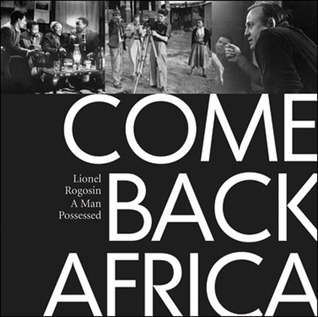
Come Back Africa: Lionel Rogosin – A Man Possessed (1950's Johannesburg)
Check my rate
| Main centres: | 1-3 business days |
| Regional areas: | 3-4 business days |
| Remote areas: | 3-5 business days |

| Main centres: | 1-3 business days |
| Regional areas: | 3-4 business days |
| Remote areas: | 3-5 business days |
Published by STE Publishers, 2004, hardcover, 148 pages, illustrated, condition: as new.
This intriguing account describes the author's grueling and often dangerous true encounters with apartheid society during the making of a film that would shed light on the oppressed.
Come Back Africa reads like a suspense story as we are caught up in Rogosin's obsession. It takes us on a journey back in time to when the foundations of the apartheid state were being laid and gives us a wonderful sense of what life was like in 1950's Johannesburg - especially the much mythologised Sophiatown.
Having already produced the widely acclaimed film, On the Bowery, about New York City's skid row, Lionel Rogosin came to South Africa in the late 1950's to explore the idea of making a film that would 'give a voice to the oppressed'. He quickly made contact with Can Themba, Bloke Modisane and Lewis Nkosi, writers associated with the crusading magazine, Drum, who have become legends in their own right. It was Rogosin's willingness to place blacks at the centre of the film-making process and let them speak for themselves about life under apartheid that made this film entirely unique.
Fortunately, Lionel Rogosin wrote down the story of what he and his Come Back Africa colleagues went through to make this important film. Peter Davis, a filmmaker who knew Rogosin well, has edited this into a highly readable account of what was, in effect, a gruelling and often dangerous encounter with apartheid society. Come Back Africa reads like a suspense story as we are caught up in Rogosin's obsession. It takes us on a journey back in time to when the foundations of the apartheid state were being laid and gives us a wonderful sense of what life was like in 1950s Johannesburg - especially the much mythologised Sophiatown. Rogosin's insights and comments, as he tries to unravel and come to grips with the perplexing mess of racial intolerance, domination and bigotry that was South Africa, are revealing - about the times but also about Rogosin's own views and prejudices.
The film had a profound effect on African cinema, and remains historically and cultural importance as a document preserving the heritage of the townships in South Africa in the 1950s. It may be classified as reportage, documentary, historical movie or political cinema, since it portrays real events and people. It reveals an interpretation of meaningful social facts and a strong ethical assumption towards human behaviours like racism.